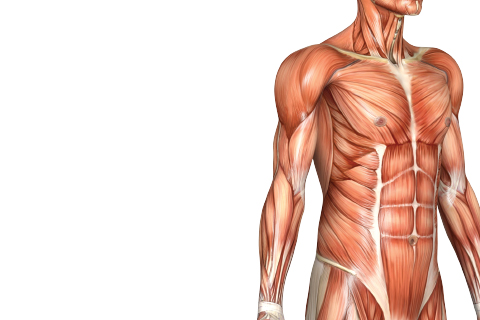A Strong Core Can Improve Your Cycling

Bycling shops do a lot of fit work with a wide range of athletes. Each athlete that comes in is different, with his or her own unique style of riding, goals, experiences, and even ailments. While athletes differ, their ailments can be extremely similar. The most common ailments I see are back, shoulder, neck, and/or knee related. Why is that? Training schedules are often adjusted to life’s demands, such as full-time jobs and family obligations. Often, work requires sitting at a desk for long periods of time. For many, the first chance to ride is usually at the end of the day. And for most of us, post-ride recovery usually involves some form of couch time. This type of schedule wreaks havoc on shoulders, hip flexors, hamstrings, and the spine as they are forced into constant flexion and forward rotation. The constant flexion can cause muscular imbalances that lead to poor posture, injury, and a dysfunctional riding position. Dysfunctional riding position often refers to a tilted or twisted pelvis and poor posture (slouched back and forward-rolled shoulders). It is important, therefore, to reverse and correct these effects.
Strengthening your core is the foundation for a strong riding position. “Core” refers to more than just strong abdominal muscles or having a “six-pack” (the rectus abdominis plays a very small roll in cycling). Rather, the core refers to all the muscle groups from the top of your shoulders to the bottom of your pelvis. These muscles work to keep your pelvis, spine, and shoulders stable so you can have an efficient and effective pedal stroke. Poor pedal stroke mechanics can be the result of a weak core, which can be seen in excessive rocking of the hips and upper body movement while pedaling. This excessive movement is not an efficient way to apply power to the pedals and actually increases the amount of work (metabolic cost) needed for each pedal stroke. A weak core also causes slouching during a ride, which results in poor riding posture as well as back, neck, shoulder, and hand strain.
While a stronger core will make you a stronger cyclist, cycling itself will not create a stronger core. It is important for athletes to focus on building a strong foundation by having a good, consistent core routine that focuses on hips, glutes, and deep abdominal muscles (transverse abdominis). A vital part of this core routine is stretching.
I believe that stretching is one of the most important exercises you can do as a cyclist or triathlete. A proper stretching routine will reverse the negative effects of cycling, keeping your muscles working efficiently, minimizing injuries, and allowing you to have a more functional position on the bike. Good bike posture can be described as sitting squarely on the saddle with an anteriorly-rotated pelvis (most of the bend to the handlebars comes from the pelvis). The result of good bike posture is a flatter back with relaxed shoulders and a relaxed neck. Poor posture, on the other hand, is a posteriorly-rotated pelvis (the pelvis is curled up underneath the rider) with most of the bend to the handlebar coming from a drastic curve in the thoracic vertebra and forwardly-rotated shoulders. Poor posture can cause strain in the upper back and neck.
Tight hamstrings, glutes, and hip flexors are the major groups that most often cause poor bike posture. Tight glutes or hip flexors can tug at your pelvis and spine, causing you to tilt off to one side of the saddle or rotate one hip more forward on the saddle than the other. This causes poor pedaling mechanics and, in most cases, one leg will act functionally longer than the other. Tight hamstrings can pull down on your pelvis, making it difficult for the pelvis to anteriorly rotate in the saddle, and inhibit shoulder and back flexibility while in the drops or aero-bars (this is more of an issue for cyclist or triathletes riding a time trial bike or a tri-specific bike). It is best to implement a post-ride stretching routine to aid in recovery and immediately start to reverse negative effects brought on by the cycling position.
There are several yoga, Pilates, and core classes available that are specific for cycling. Check with your gym or local training group to see what they offer. Austin has several free classes around town. Going to a class is a great way to expose yourself to new stretches, pinpoint your weaknesses, and improve upon your weaknesses and test your progress.
Free clinics where you can strengthen your core:
Jack & Adam's, 1210 Barton Springs Road, jackandadams.com
Mondays and Wednesdays, 5:30-6:30 p.m., Core/Calisthenics
Bettysport, 916 West 12th Street,
bettysport.com
Tuesdays, 8:45-9:45 a.m., B-ilates (mix of barre work and Pilates)*
Wednesdays, 6 p.m.-7 p.m., Power Yoga
Thursdays, 6 p.m., Power Yoga
CrossFit Central, 6205-A Burnet Road, crossfitcentral.com
Last Saturday of every month, 8:30-9:30 a.m., CrossFit UTB (Under the Bridge—meets under the MoPac bridge on the Roy and Ann Butler Hike and Bike Trail at Lady Bird Lake)
Lululemon Athletica, 1016 West 6th, lululemon.com
Saturdays, 8:30-9:30 a.m., Yoga
Luke’s Locker, 115 Sandra Muraida Way, Suite 102, lukeslocker.com
Wednesdays, 6 a.m., Core Workout with Meg Hare
Sundays, 10 a.m., Yoga
*requires equipment and reservation
Kevin McRee has been practicing bike fitting for over five years. After suffering severe trauma to both legs in 2006, he developed an interest in biomechanical limitations and how they relate to cycling. He has lived in Austin and worked at Jack & Adam’s Bicycles for the last two years. Kevin is certified for BG Fit and Retül Motion Capture fits. He is an avid cyclist and races across Texas.






